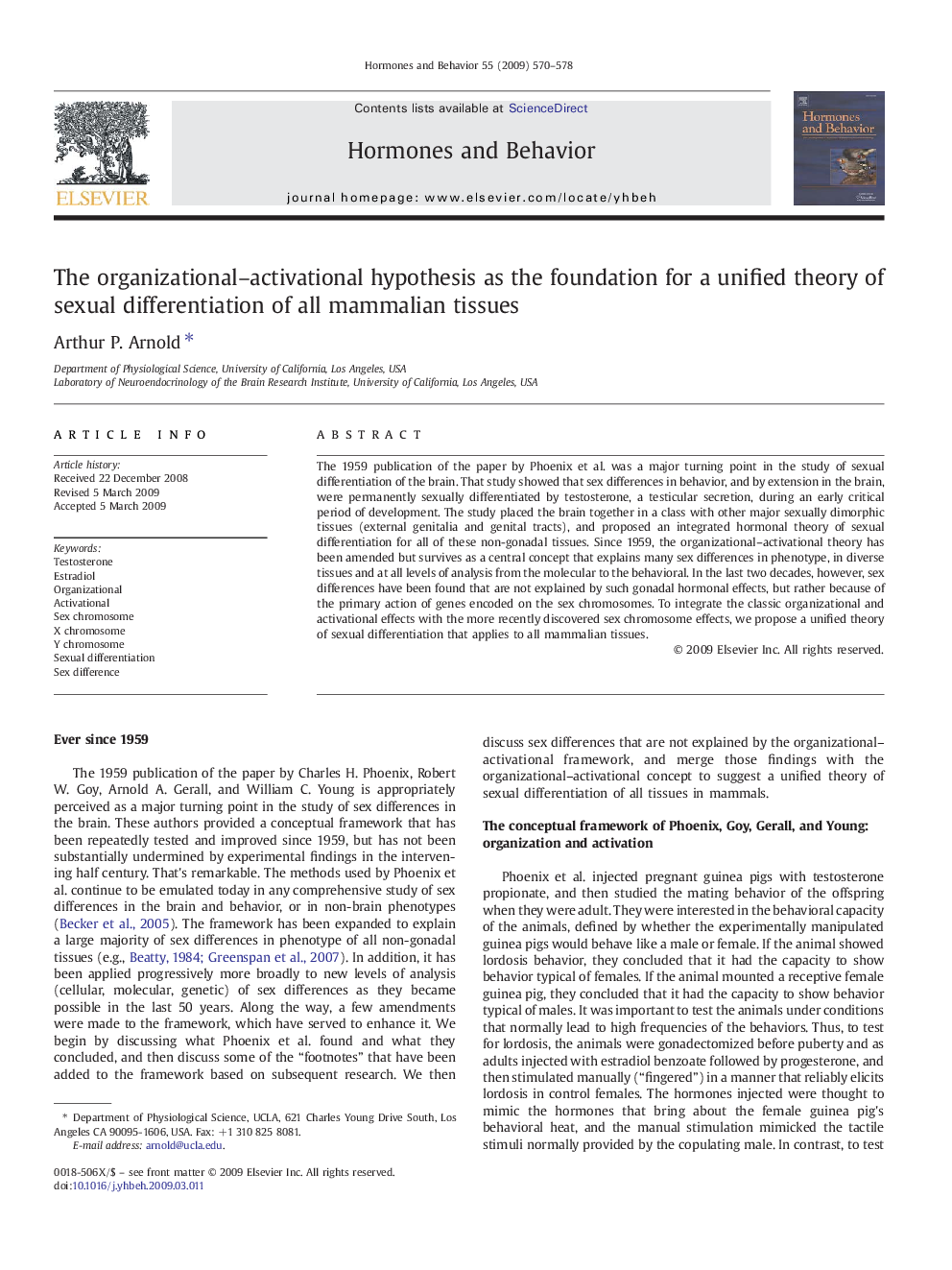| کد مقاله | کد نشریه | سال انتشار | مقاله انگلیسی | نسخه تمام متن |
|---|---|---|---|---|
| 324137 | 540909 | 2009 | 9 صفحه PDF | دانلود رایگان |

The 1959 publication of the paper by Phoenix et al. was a major turning point in the study of sexual differentiation of the brain. That study showed that sex differences in behavior, and by extension in the brain, were permanently sexually differentiated by testosterone, a testicular secretion, during an early critical period of development. The study placed the brain together in a class with other major sexually dimorphic tissues (external genitalia and genital tracts), and proposed an integrated hormonal theory of sexual differentiation for all of these non-gonadal tissues. Since 1959, the organizational–activational theory has been amended but survives as a central concept that explains many sex differences in phenotype, in diverse tissues and at all levels of analysis from the molecular to the behavioral. In the last two decades, however, sex differences have been found that are not explained by such gonadal hormonal effects, but rather because of the primary action of genes encoded on the sex chromosomes. To integrate the classic organizational and activational effects with the more recently discovered sex chromosome effects, we propose a unified theory of sexual differentiation that applies to all mammalian tissues.
Journal: Hormones and Behavior - Volume 55, Issue 5, May 2009, Pages 570–578